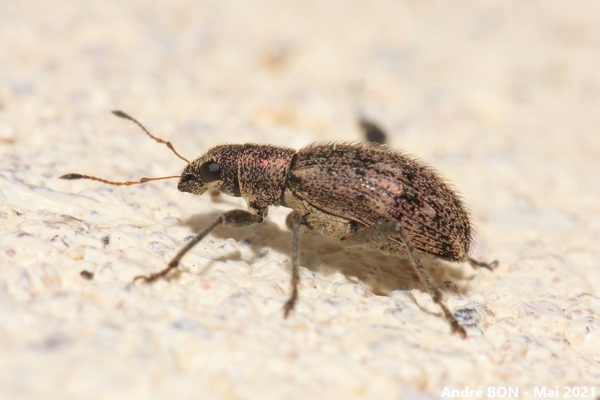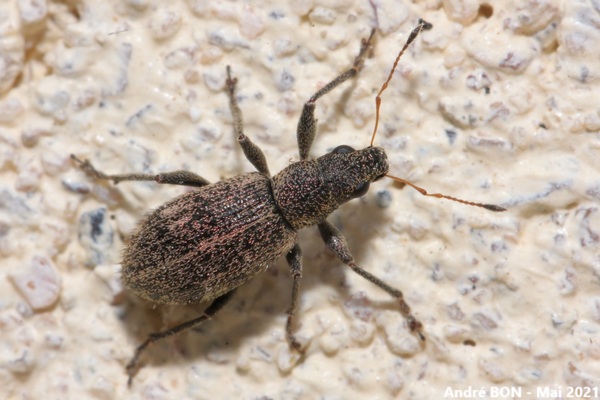


| Polydrusus (Scythodrusus) inustus (Germar, 1823) |



|
|
Scientific name: Polydrusus (Scythodrusus) inustus (Germar, 1823) Common name: French name: Order: Coleoptera Family: Curculionidae Wingspan : 3.5-5.5 mm Biotope: Mostly in hot and dry environments, polyphagous on many trees and herbaceous plants. Geographic area: Central Asia, Asia Minor, Central Europe. The distribution area has now extended to Western Europe. Observation period : Early May to October. |
You can distinguish weevils of the Polydrusus genus compared to weevils of the Phyllobius genus from the shape of the scrobe (line where the antenna is inserted). It is rather straight, short and hardly visible on Phyllobius while it is curved and extends as far as below the eyes on Polydrusus. Polydrusus inustus appears greyish-brown copper in colour due to its black cuticle covered with elongated scales of grey colour with copper reflections. The head is quite short, the eyes are large. The pronotum is wider than long and very slightly rounded on the sides. It is densely punctuated. The scutellum is small and hairless. The elytra are oval and their base is wider than the pronotum. The upper side is covered with fine black erect bristles. The femurs are toothed. The antennal club, femora and tibiae are black. The rest of the antennae are red-brown in colour. Andrion regensteinense has the sides of the pronotum significantly more rounded. |
| [To know more about the Polydrusus (Scythodrusus) inustus] [Next picture] [Top] |

|
Everything matches for the identification of Polydrusus inustus with the exception of the colour of the bristles erect on the top of the elytra which do not appear very dark to me. This may just be an effect due to the lighting in the scene. |
| [To know more about the Polydrusus (Scythodrusus) inustus] [Next picture] [Previous picture] [Top] |

|
This top view clearly shows the shape of the pronotum, wider than long, and its very slightly rounded lateral edges. A tooth can be seen on the left fore femur. |
| [To know more about the Polydrusus (Scythodrusus) inustus] [Previous picture] [Top] |

|
The eyes are large. The antennae are red-brown with a black club ... all you just have to do is to ask if it comes from Central Europe ;-) |